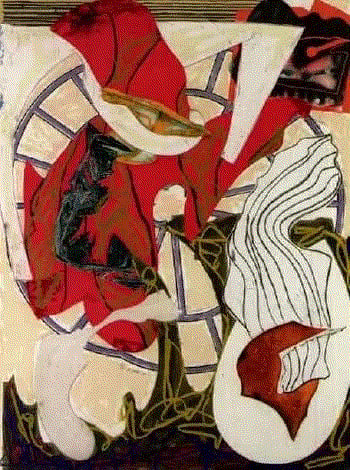Frank Stella died on Saturday, May 4, at the age of 87.
He changed the way the world views art, creates art and defines art.
His now iconic Black Paintings (1958-1960) were made with a housepainter’s brush and enamel paint. They were the tools he used wile working as a housepainter to pay rent in his New York apartment.
Stella was born in Malden, Massachusetts on May 12, 1936. His father was a gynecologist, his mother painted landscapes. He attended Phillips Academy in Andover, Massachusetts and then went on to get a Bachelors Degree in history at Princeton.
The Black Paintings were included in group exhibits at New York galleries. Four of the paintings were included in the Sixteen Americans exhibit at the Museum of Modern Art in 1959. MoMA bought one of the works for their permanent collection. The result was instant acclaim for the then 23-year-old artist.
House paint served Stella well. In 1961 he created the Benjamin Moore series, using the famous brand for the paintings. Andy Warhol was so impressed with the works that he bought them all.
Stella’s work evolved over the years from flat black, to color-filled and three-dimensional.
At VFA, our interest in Frank Stella is focused on his ability to create magnificent fine art prints. In the mid-1960s, Stella began to work with master printmaker Kenneth Tyler; a collaboration that lasted nearly 35 years. Stella used a variety of techniques to create his prints, including lithography, screenprinting, etching, aquatint and offset lithography (a method which Stella himself is credited with inventing.)
Between 1985 and 1993, Stella worked on a series of prints, each named after a chapter or event from the classic novel Moby Dick by Herman Melville, which he re-read before beginning the series. Stella said that his inspiration was a whale that he saw on a trip to an aquarium with his sons, and a vacation at a summer home, near Nantucket, from where Captain Ahab began his ill-fated journey on the Pequod, searching for the whale that had taken his leg. For nearly a decade, Moby Dick was the focus of some his most inspired prints.
Stubb & Flask Kill a Right Whale (the title of Chapter 73), is one of those inspired works. It is more than 76 inches tall and combines Stella’s use of relief printed etching, aquatint and engraving.
A Squeeze of the Hand is the title of Chapter 94. It is also a large work, that combines serigraph, lithography, linocut and collage.
These works, and other fine art prints by Frank Stella, are available at VFA.
Much of the work Stella made during the last years of his life, were enormous sculptures, in many forms that can be seen in major venues around the world, including the World Trade Center.
Frank Stella died at his home in New York. The cause of death, according to his wife, pediatrician Harriet McGurk, was lymphoma. He is survived by his wife, five children and five grandchildren.
Please contact us if you would like more information about the work of Frank Stella available at VFA.
References:
William Grimes. Frank Stella, Towering Artist and Master of Reinvention, Dies at 87. The New York Times. May 4, 2024.
Deborah Solomon. Frank Stella Went From Bauhaus to Fun House. The New York Times. May 5, 2024.
Frank Stella (1936–2024). Art Forum/News Desk. May 6, 2024.






